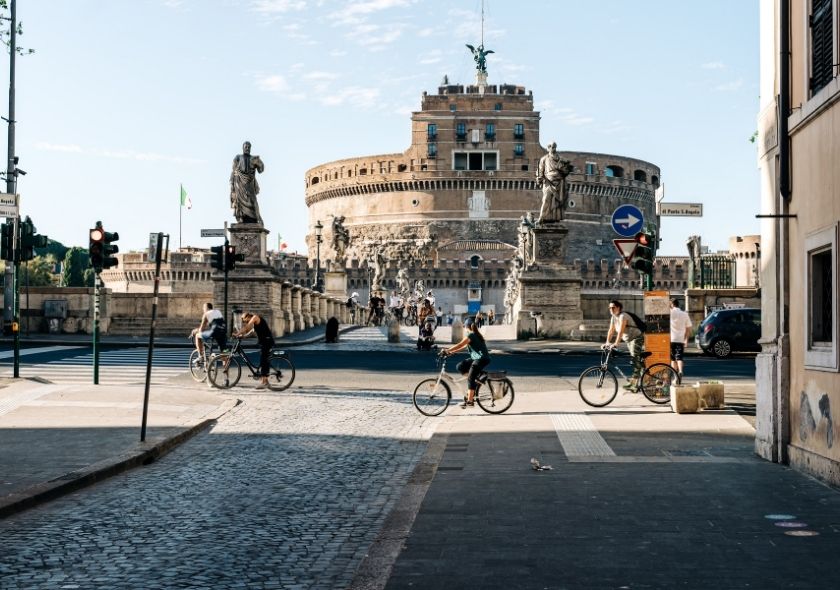
Castel Sant’Angelo– Castle of the holy Angel
If you are a fan of castle, dungeons, and mausoleums the Castle of the Holy Angel is a good one for you.
On the right side of the ancient river Tiber, in the time of Roman Emperor Hadrian, this great tomb was built between 134 and 139 AD.
Cylindrical in its base, it contains halls, chapels, apartments, courtyard, and prison cells but also a tower, garden top, and golden quadriga. A bridge Pons Aelius was added, and some say it is the center of Rome. The statues of angels were added in later, baroque time.
In 138 AD, the urns with ashes of Emperor Hadrian, his wife Sabina, and his adopted son Lucius Aelius were laid to rest in the Treasury room, in the very heart of the building.
After the sacking of Rome in 401 AD, the original decorations and ashes were lost. The only piece that has survived these looters is a capstone of an urn that covered the tomb of Otto II and later was used for a massive Renaissance baptistery.
The name Castle of the Holy Angel monument came from a tale that started with the hardship and devastation of a plague back in 590. Folks passed a tale of a miracle that has happened on the top of the Mausoleum. They say that Archangel Michael appeared on the top and by a simple swing of a sword, he announced the end of the plague.
Much later, Pope Nicholas III transformed it into a castle and attached it to St Peter’s Basilica by building Passetto di Borgo – a fortified corridor. Others added suits, chapels, and prison cells.
Well-known people that were imprisoned in this fortress were Giordano Bruno and the sculptor/goldsmith Benvenuto Cellini.
The inner courtyard was used for the executions.
The Castle of the Holy Angel was a death scene inspiration to Giacomo Puccini for his opera Tosca where the broken-hearted heroine throws herself from the castle’s walls.
In 1901 the castle became a museum under name Museo Nazionale di Castel Sant’Angelo (The National Museum of the Castle of the Holy Angel).
If you like this tour perhaps you may enjoy some of the others we have to offer
